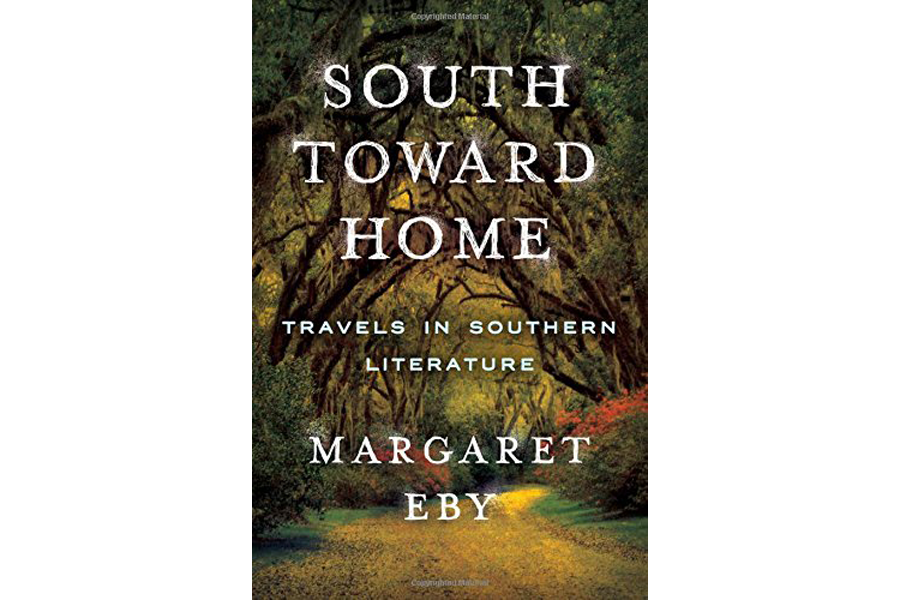'South Toward Home' asks: Why does the South inspire so many writers?
Loading...
In South Toward Home, Margaret Eby visits the old stomping grounds of her favorite Southern writers, hoping to see how place shaped their work. It’s a simple idea that a millennial writer like Eby isn’t supposed to like. Attendance at historic sites and house museums has been a mixed bag in recent years, presumably because most younger Americans aren’t much interested in taking tours of rope-lined rooms where the great once lived.
But as Deborah Lutz pointed out in "The Brontë Cabinet," her recent contemplation of the Brontë sisters through the possessions they left behind, a school of scholarship called “thing theory” is reviving interest in the relationship between celebrated writers and the physical realities that touched their lives. Eby’s book affirms that connection, and like Lutz, she happily avoids any hint of pedantry in making her case. There’s no talk here of paradigms, literary constructs, or narrative frames. Instead, Eby, who grew up in Alabama but now works as a journalist in New York, tackles a more basic but no less complicated question: “What is it about [the South] that inspires so many? What makes the South different?”
In her quest for an answer, Eby travels to places connected with Eudora Welty, Richard Wright, William Faulkner, Flannery O’Connor, Harry Crews, Harper Lee, Truman Capote, John Kennedy Toole, Barry Hannah, and Larry Brown. She quickly reveals the South not as a monolith but as myriad subcultures, with place as particular as a neighborhood block, a local fishing hole, even an inner bedroom. Eby suggests that this intimate geography has more to tell us about the South and its literature than all the deep-fried clichés about the region as a “defeated country, some melee of swamps, magnolia trees, and antebellum houses populated by rifle-toting, camouflage-wearing fundamentalists and sneering good old boys scored to menacing banjo music .... ”
Eby’s book is a welcome antidote to those tired generalities. With the constancy of a compass needle, she gravitates instead toward the telling detail. A self-professed bibliophile who brought books to the dinner table as a child, Eby, like her literary heroes, looks at landscapes and sees stories sprouting from the ground. Visiting Welty’s garden, she notes that for the renowned Mississippi writer, tending flowers and writing books both sprang from the same impulse to nurture something bright and perfect and memorable. “For Welty, gardening was the process that helped distill the imaginative jumble in her head into stories,” Eby tells readers. “It was in the garden, Welty wrote in her papers, that she first ‘set myself at a storyteller’s remove.’ ”
Welty would like Eby’s observant eye. “Camellias were Welty’s particular favorite,” Eby writes. “They lined the sides of her house, pale pink or dazzling cherry red, some with names, like Berenice Boddy, that sound like small-town churchgoing folk.” Eby gets a couple of small things wrong. She refers to the novels of James Thurber on Welty’s shelf, though Thurber wrote no novels. She also mistakenly describes Welty’s friend William Maxwell as her agent.
But most of "South Toward Home" is so just-right that you wish you’d written it yourself. Visiting New Orleans for a glimpse of the Lucky Dog hot dog carts that figured in Toole’s comic "Confederacy of Dunces," Eby describes how many tourists arrive in the city:
"The directions to get there from Mississippi are simple: Follow the highway until the swamp eats it. Eventually, the ground drops out beneath the road entirely.... New Orleans scrolled out before me like a manuscript marked with a sure hand, a play with the director’s notes scribbled in every street."
Described so magically, the terrain of "South Toward Home" can seem beyond time, but Eby’s narrative inadvertently chimes with recent headlines. She visits Harper Lee’s Alabama hometown of Monroeville before the controversial release of "Go Set a Watchman" and so has little to say about that literary firestorm, but news of the long-lost novel gives Eby’s account a sharpened urgency. And Eby seemed to eerily anticipate this year’s heated debate about Confederate imagery in this passage about Faulkner: “To be Southern is to grow up among the ruins. Southernness suggests a deep, inescapable past, an inability to move forward without the weight of your ancestors.”
Eby’s take on the texts of the writers she profiles is so perceptive that "South Toward Home" begs for more of it. Although the book aspires to show how place and prose interact, it offers much more travelogue than literary critique. She doesn’t so much argue for these writers as point us toward them, including a suggested reading list at the end.
Eby doesn’t definitively determine why the link between and literature in the South is so strong, but like any ardent traveler, she’s more gratified by the journey than an ultimate destination. “It is an ongoing cartographic exercise, to trace and retrace the boundaries of the South, to try and figure out what it contains,” she concludes. “It’s about figuring out just exactly where you are. It’s about going home.”






